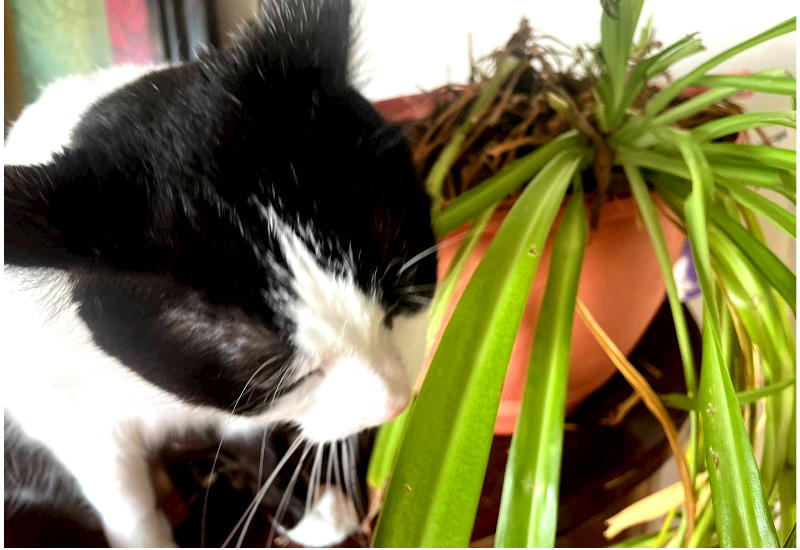March is upon us and in the veterinary field, this is when we highlight pet poison awareness. With thoughts of spring just around the corner, it’s time to look around and think about some of the plants with which we’ve surrounded ourselves. Did you know that azaleas, rhododendrons, philodendron, lilies and even tulips are considered toxic? In some cases, every part of the plant is toxic. In others, it is just the flower, or just the bulb.
Many of us love picking new plants. Perhaps a beautiful leaf catches your eye while browsing in IKEA, or perhaps you are one who frequently heads out to the amazing greenhouses and garden centers in and around Winnipeg. Living in a city where much of the greenery is covered for several months out of the year, having a lively display indoors is therapeutic for many, and fun and challenging for others. But have you asked yourself if that new plant is safe for your furry friend? Although younger animals are much more likely to explore, ingest or inhale something out of the blue, our older companions also like to keep us on our toes.
Annual lists compiled by the Animal Poison Control Center at the ASPCA report that the most common toxins ingested are over the counter medications, followed by food items. Plants repeatedly rank in the top 5. Many plants can cause at least mild gastro-intestinal upset depending on your pet’s sensitivities, but these are not necessarily considered “toxic.” As veterinarians, we consider plants toxic when they cause severe or systemic effects.
Creating a safe environment for your pets while maintaining a green haven is entirely possible. Observe your pet’s behavior and be particularly aware if they are the more curious sort. Here are a few tips for selecting and caring for indoor plants:
Research Pet-Friendly Plants: Choose plants that are known to be non-toxic to pets. Spider plants, Boston ferns, and certain palms are excellent options that add vibrancy without posing a threat. The Pet Poison Helpline is a reliable source of online information, with an extensive poison list.
Be Aware of Toxic Plants and Create Safe Zones: Identify plants known to be toxic to pets and designate certain areas as either pet-friendly or off limits. Keep toxic plants out of reach. You may need to get creative with this to help meet a particular plant’s needs and keep our agile feline friends away.
Secure Plant Containers: Ensure that plant containers are stable and not easily tipped over by curious pets. This prevents accidental ingestion of soil or plant parts.
Keep in mind that even if you’ve made every effort to keep your home safe, things happen! Being prepared for any unforeseen circumstances is a responsible part of pet ownership. It’s always a good idea to have your veterinary clinic’s information handy, and it’s also a good idea to be familiar with local emergency clinics, in case of accidents during off hours. If you see your pet ingesting something they shouldn’t, time is of the essence for decontamination to be possible. The Pet Poison Helpline has a phone number available 24/7 in North America (1-800-213-6680) to help guide you on whether care is necessary.
You know your pet best and you know when they aren’t at 100%. If your pet is showing signs of sudden onset confusion, incoordination, difficulty breathing, drooling, severe vomiting or diarrhea, seizures, or tremors, don’t hesitate to take action. Even if care is often limited to controlling symptoms and flushing out toxins with fluids, early intervention can save a life!
Until next time my paw-print loving friends.
Silver Heights Veterinary Hospital is proud to serve the Winnipeg region, and is located on Ness Avenue in St. James. Contact them at 204-504-5600 or visit their website at silverheightsvethospital.ca


